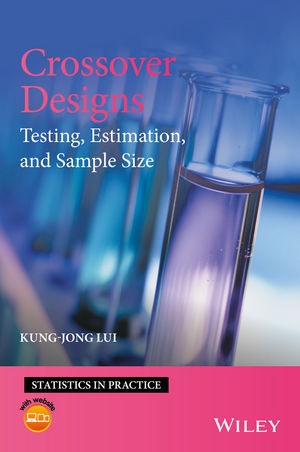Ulteriori informazioni
Informationen zum Autor Kung-Jong Lui, Professor, Department of Mathematics and Statistics, San Diego State University, USA. Klappentext A comprehensive and practical resource for analyses of crossover designsFor ethical reasons, it is vital to keep the number of patients in a clinical trial as low as possible. As evidenced by extensive research publications, crossover design can be a useful and powerful tool to reduce the number of patients needed for a parallel group design in studying treatments for non-curable chronic diseases.This book introduces commonly-used and well-established statistical tests and estimators in epidemiology that can easily be applied to hypothesis testing and estimation of the relative treatment effect for various types of data scale in crossover designs. Models with distribution-free random effects are assumed and hence most approaches considered here are semi-parametric. The book provides clinicians and biostatisticians with the exact test procedures and exact interval estimators, which are applicable even when the number of patients in a crossover trial is small. Systematic discussion on sample size determination is also included, which will be a valuable resource for researchers involved in crossover trial design.Key features:* Provides exact test procedures and interval estimators, which are especially of use in small-sample cases.* Presents most test procedures and interval estimators in closed-forms, enabling readers to calculate them by use of a pocket calculator or commonly-used statistical packages.* Each chapter is self-contained, allowing the book to be used a reference resource.* Uses real-life examples to illustrate the practical use of test procedures and estimators* Provides extensive exercises to help readers appreciate the underlying theory, learn other relevant test procedures and understand how to calculate the required sample size.Crossover Designs: Testing, Estimation and Sample Size will be a useful resource for researchers from biostatistics, as well as pharmaceutical and clinical sciences. It can also be used as a textbook or reference for graduate students studying clinical experiments. Zusammenfassung A comprehensive and practical resource for analyses of crossover designs For ethical reasons, it is vital to keep the number of patients in a clinical trial as low as possible. Inhaltsverzeichnis About the author xi Preface xii About the companion website xiv 1 Crossover design - definitions, notes, and limitations 1 1.1 Unsuitability for acute or most infectious diseases 2 1.2 Inappropriateness for treatments with long-lasting effects 2 1.3 Loss of efficiency in the presence of carry-over effects 3 1.4 Concerns of treatment-by-period interaction 3 1.5 Flaw of the commonly used two-stage test procedure 4 1.6 Higher risk of dropping out or being lost to follow-up 4 1.7 More assumptions needed in use of a crossover design 5 1.8 General principle and conditional approach used in the book 5 2 AB/BA design in continuous data 7 2.1 Testing non-equality of treatments 10 2.2 Testing non-inferiority of an experimental treatment to an active control treatment 11 2.3 Testing equivalence between an experimental treatment and an active control treatment 12 2.4 Interval estimation of the mean difference 13 2.5 Sample size determination 16 2.5.1 Sample size for testing non-equality 16 2.5.2 Sample size for testing non-inferiority 17 2.5.3 Sample size for testing equivalence 18 2.6 Hypothesis testing and estimation for the period effect 19 2.7 Estimation of the relative treatment effect in the presence of differential carry-over effects 21 2.8 Examples of SAS programs and results 22 Exercises 27 3 AB/BA design in dichotomous data 30 <...

